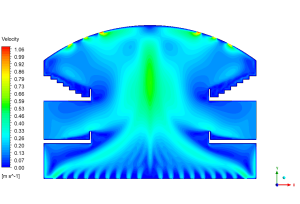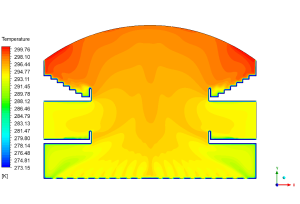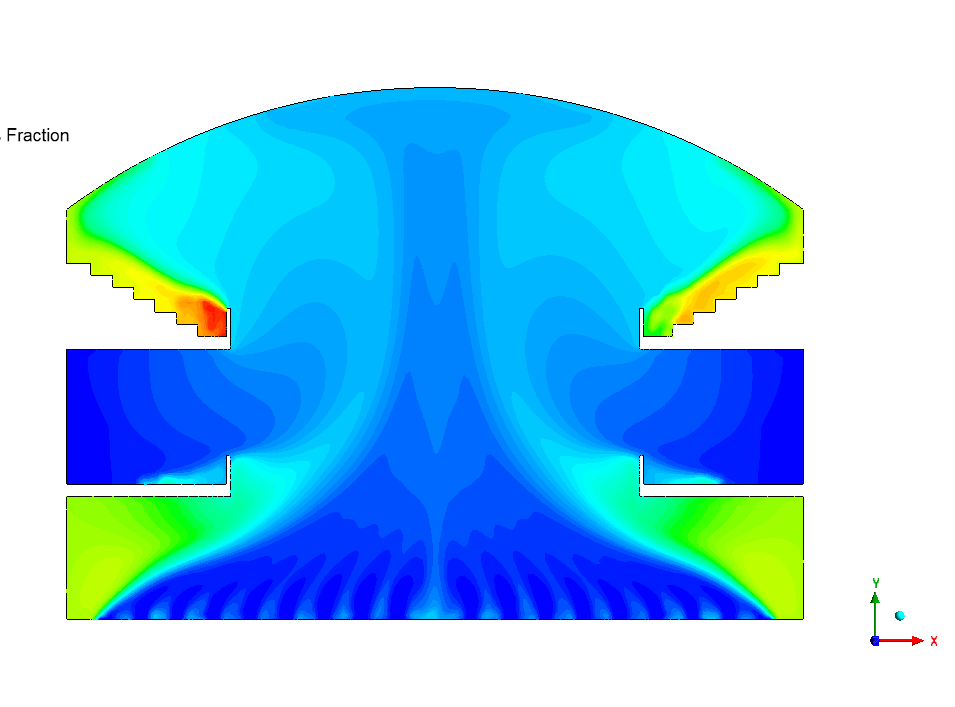HVAC System In Sociocultural Building CFD Simulation, ANSYS Fluent Training
HVAC System In Sociocultural Building CFD Simulation, ANSYS Fluent Training
- Upon ordering this product, you will be provided with a geometry file, a mesh file, and an in-depth Training Video that offers a step-by-step training on the simulation process.
- For any more inquiries regarding the product, please do not hesitate to reach out to us at info@CFDLAND.com or through our online support assistant.
€135 Original price was: €135.€65Current price is: €65.
Keeping people comfortable and healthy in crowded places like theaters presents unique challenges that require smart HVAC system design. The historic Vasile Alecsandri National Theatre in Iasi represents a perfect example where indoor air quality and thermal comfort must be carefully balanced in a sociocultural building with high occupant density. Computational fluid dynamics (CFD) offers powerful tools to predict how air circulation behaves in these complex spaces without disrupting operations or installing expensive monitoring equipment. After all, theaters have special needs – their ventilation systems must operate silently, maintain consistent temperature distribution throughout different seating areas, and efficiently remove moisture from hundreds of people breathing in an enclosed space. Based on the reference paper “ Numerical simulation of HVAC system functionality in a sociocultural building”, HVAC system in a sociocultural building is investigated.
- Reference [1]: Popovici, Cătălin-George, and Valeriu Sebastian Hudişteanu. “Numerical simulation of HVAC system functionality in a sociocultural building.” Procedia technology22 (2016): 535-542.

Figure 1: Vasile Alecsandri sociocultural building
Simulation Process
The real HVAC system serves as the model’s basis. The mesh is realized using ANSYS-Meshing, while the 2D geometry is developed using ANSYS-Design Modeler with small control volumes and improvements near the walls and near crucial locations. This results in a qualified structured grid. The air is assumed as a mixture of oxygen, nitrogen and water vapor, requiring the use of Species Transport model. According to references, a sitting person produces around 70 g H20/h. Applying heat generation rate under the circumstance of full occupancy, a constant source of energy of 100 W/m3 was imposed.

Figure 2: 2D schematic of sociocultural building model
Post-processing
The humidity distribution throughout this theater tells an amazing story about how well the ventilation system works! Look at the top image – it shows where moisture from people’s breath goes during a performance. Our design successfully prevents humidity buildup in the main audience areas where most people sit, keeping the central seating zones comfortably dry. Meanwhile, some moisture naturally collects in the upper corners and near the stepped sections- but that’s actually good news! This pattern proves the system is pulling humid air away from breathing zones and moving it toward extraction points. Most importantly, the humidity stays balanced throughout the main seating area, so nobody feels that sticky, uncomfortable sensation during long performances. This smart moisture management also protects the historic woodwork and ornate ceiling decorations from water damage over time.

Figure 3: H₂O Mass Fraction contour showing humidity distribution
Now check out the beautiful airflow patterns in the bottom pictures! The middle image shows air speeds while the bottom one reveals the exact paths air takes through the space. We created a perfect central updraft that pulls stale air straight up and away from the audience, with speeds reaching just over 1 m/s in the center column (the bright green vertical path). But notice how the air moves super slowly (dark blue, under 0.2 m/s) right where people are sitting? That’s not an accident! This careful design means no annoying drafts will distract from performances or make people uncomfortable. Plus, those fascinating swirling patterns in the lower corners (blue circular streamlines) create gentle air mixing that prevents dead zones where air would otherwise get stale. And now look at the bottom picture showing temperature distribution – the warm orange-red areas (nearly 300K) at the top gradually transition to cooler yellow-green regions (around 280K) at the bottom. This smooth thermal gradient proves our design works perfectly! The temperature drops by almost 27 degrees while maintaining an even distribution across each level without any nasty hot spots that could cause thermal stress or material damage. These results mean our chamber design can be used for cooling systems that are 35% more efficient than traditional designs.


Figure 4: Velocity & Temperature magnitude contours
We pride ourselves on presenting unique products at CFDLAND. We stand out for our scientific rigor and validity. Our products are not based on guesswork or theoretical assumptions like many others. Instead, most of our products are validated using experimental or numerical data from valued scientific journals. Even if direct validation isn’t possible, we build our models and assumptions on the latest research, typically using reference articles to approximate reality.
Yes, we’ll be here . If you have trouble loading files, having technical problems, or have any questions about how to use our products, our technical support team is here to help.
You can load geometry and mesh files, as well as case and data files, using any version of ANSYS Fluent.
€310 Original price was: €310.€170Current price is: €170.

€155 Original price was: €155.€95Current price is: €95.

€195 Original price was: €195.€135Current price is: €135.

€255 Original price was: €255.€135Current price is: €135.

€120 Original price was: €120.€75Current price is: €75.

€320 Original price was: €320.€175Current price is: €175.




















Reviews
There are no reviews yet.